Abstract
Mice of two inbred strains, prone to nephritis following neonatal lymphocytic choriomeningitis virus infection, produced antibody of lower affinity to two soluble protein antigens, human serum albumin and transferrin, than did two nephritis-resistant strains. Antigen in adjuvant elicited higher affinity antibody than did antigen in saline, in the nephritis-prone mice. The significance of these findings in the pathogenesis and treatment of nephritis, arthritis and other possible soluble complex disease is discussed.
Full text
PDF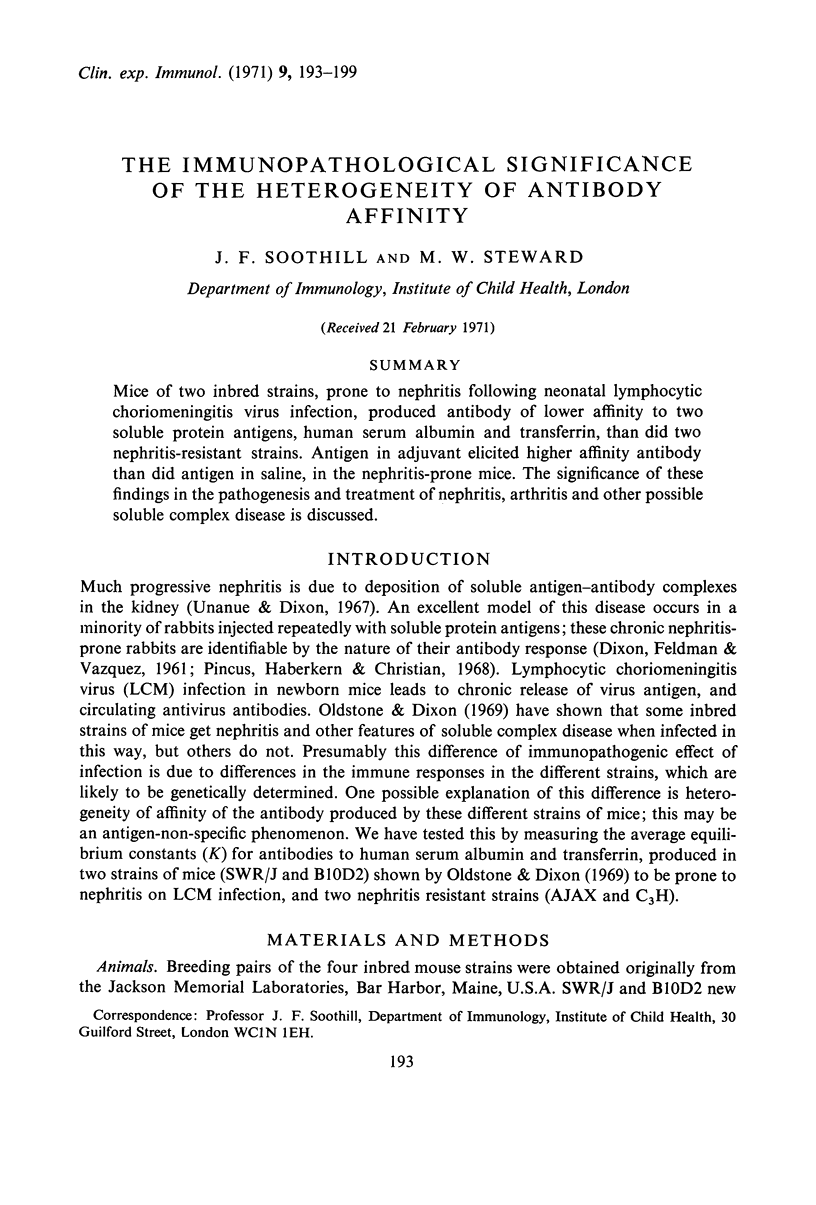
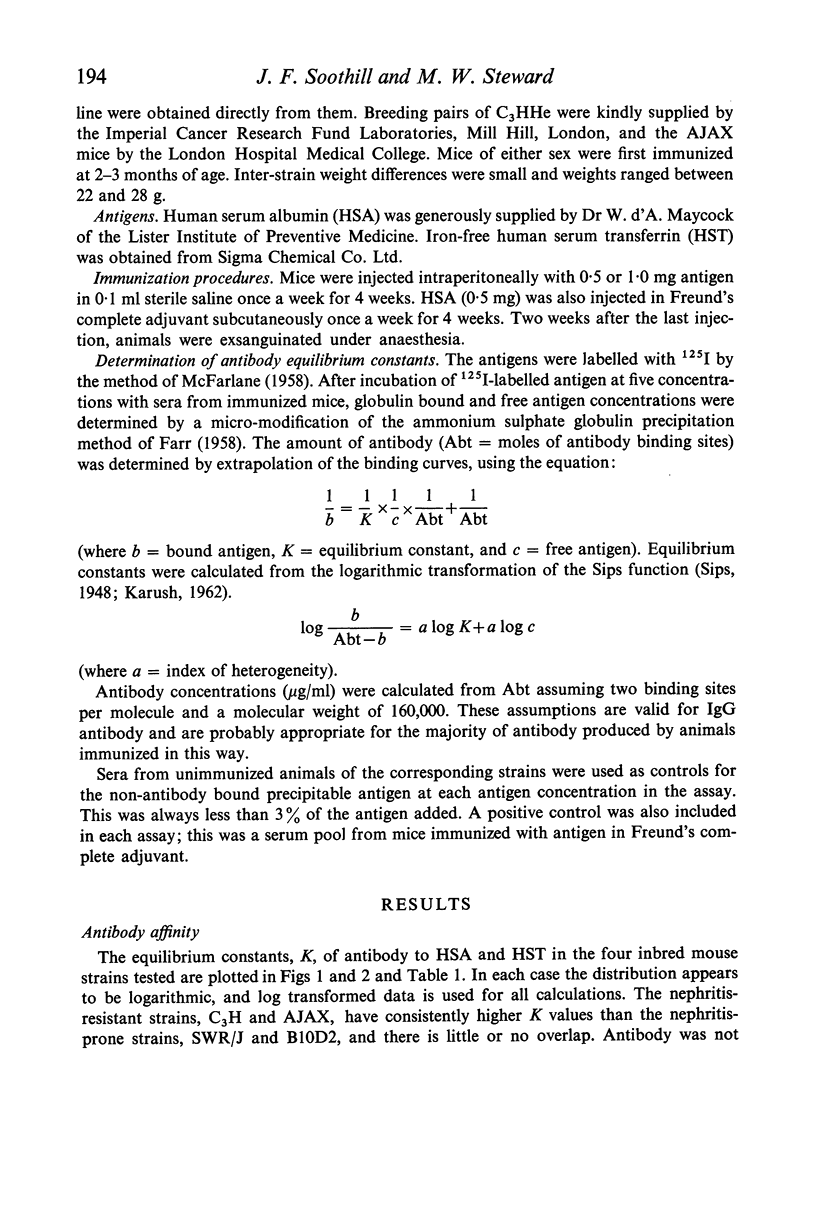
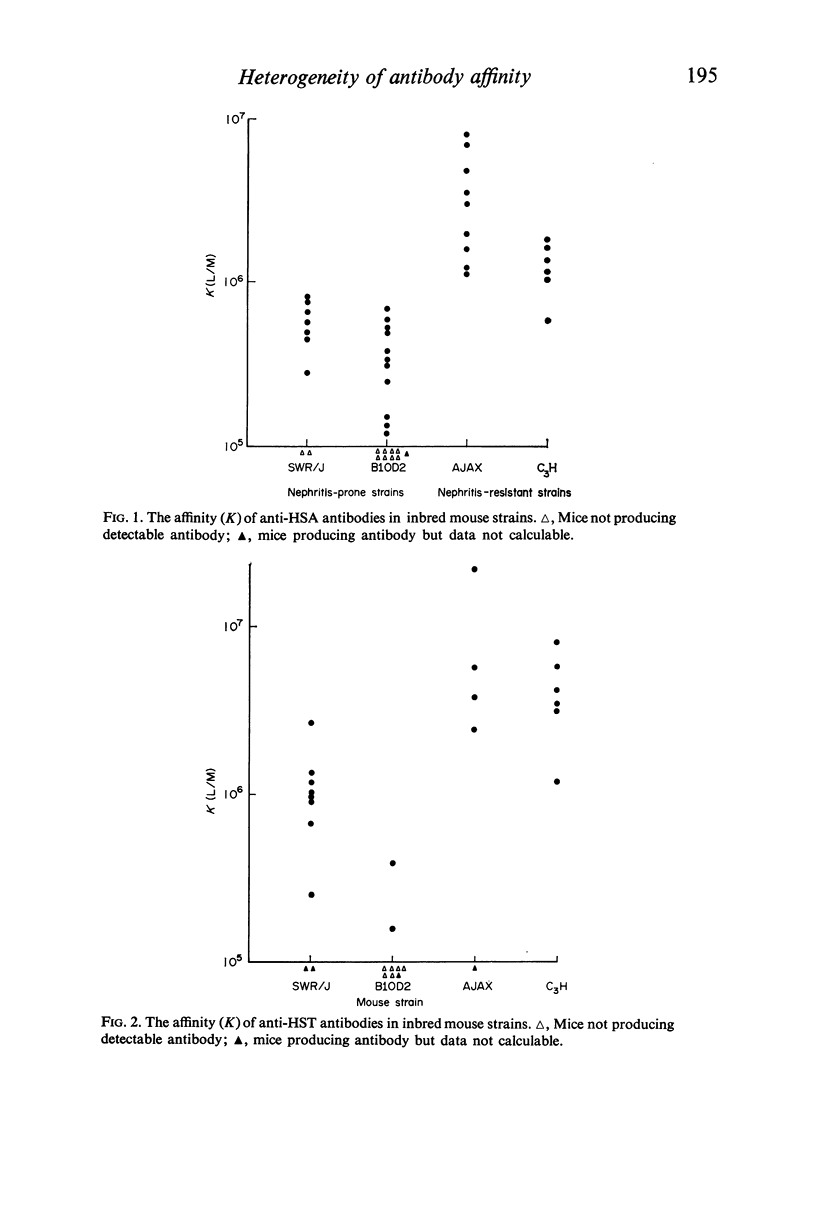
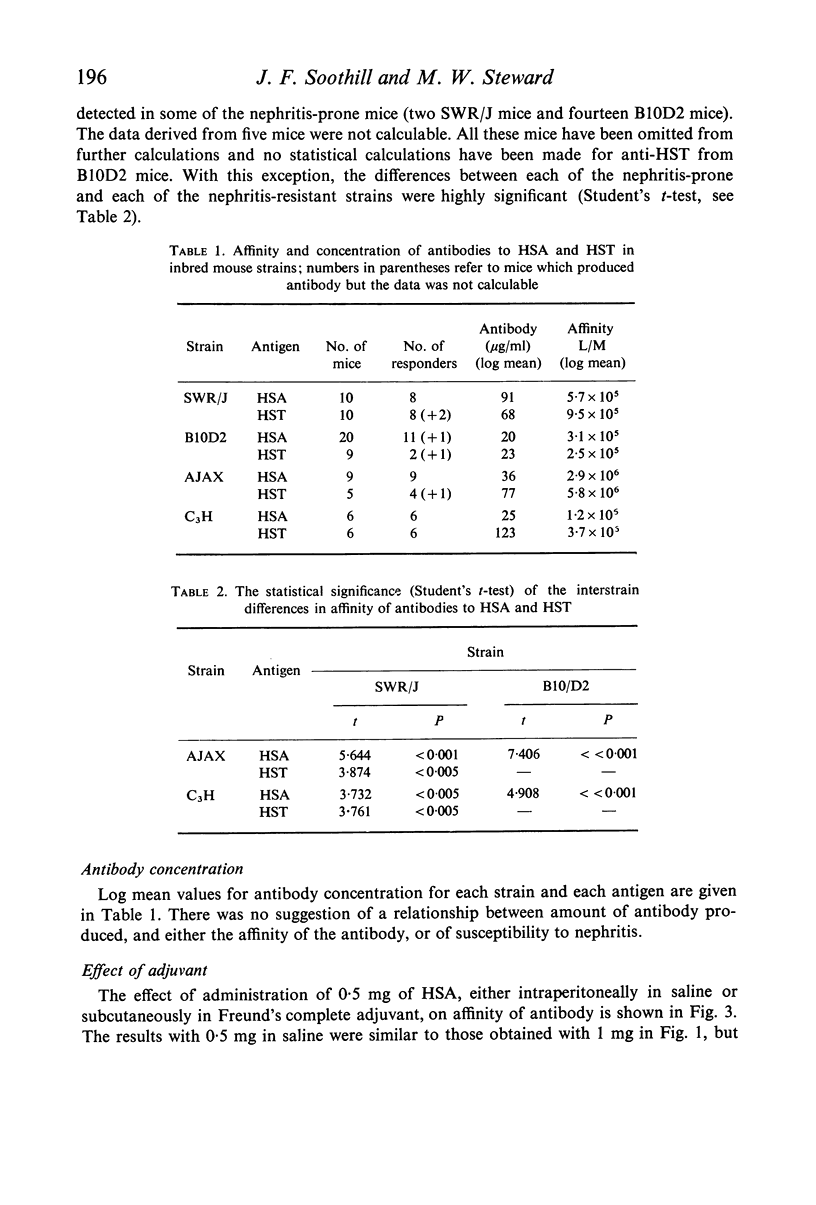
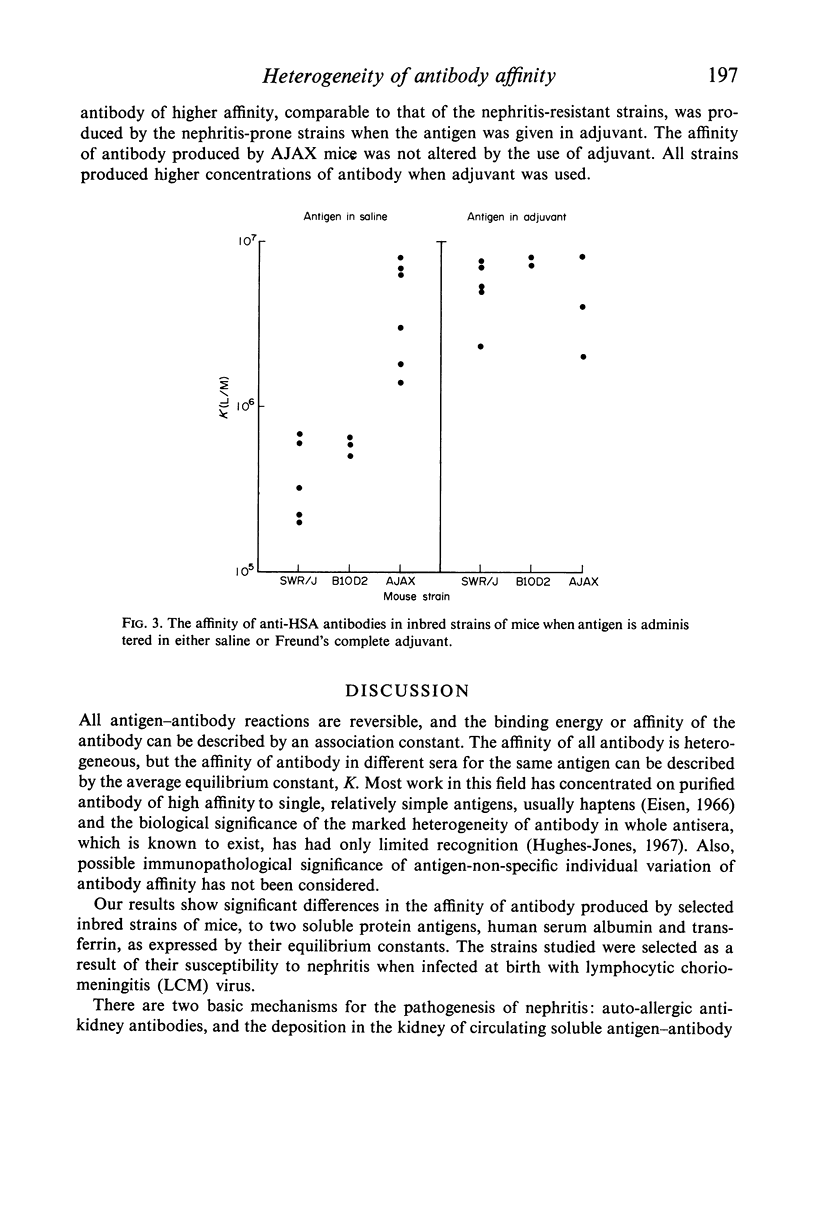


Selected References
These references are in PubMed. This may not be the complete list of references from this article.
- Christian C. L. Character of non-precipitating antibodies. Immunology. 1970 Apr;18(4):457–466. [PMC free article] [PubMed] [Google Scholar]
- DIXON F. J., FELDMAN J. D., VAZQUEZ J. J. Experimental glomerulonephritis. The pathogenesis of a laboratory model resembling the spectrum of human glomerulonephritis. J Exp Med. 1961 May 1;113:899–920. doi: 10.1084/jem.113.5.899. [DOI] [PMC free article] [PubMed] [Google Scholar]
- Eisen H. N. The immune response to a simple antigenic determinant. Harvey Lect. 1966;60:1–34. [PubMed] [Google Scholar]
- FARR R. S. A quantitative immunochemical measure of the primary interaction between I BSA and antibody. J Infect Dis. 1958 Nov-Dec;103(3):239–262. doi: 10.1093/infdis/103.3.239. [DOI] [PubMed] [Google Scholar]
- Hughes-Jones N. C. The estimation of the concentration and equilibrium constant of anti-D. Immunology. 1967 May;12(5):565–571. [PMC free article] [PubMed] [Google Scholar]
- McFARLANE A. S. Efficient trace-labelling of proteins with iodine. Nature. 1958 Jul 5;182(4627):53–53. doi: 10.1038/182053a0. [DOI] [PubMed] [Google Scholar]
- Nussenzweig V., Benacerraf B. Antihapten antibody specificity and L chain type. J Exp Med. 1967 Oct 1;126(4):727–743. doi: 10.1084/jem.126.4.727. [DOI] [PMC free article] [PubMed] [Google Scholar]
- Oldstone M. B., Dixon F. J. Pathogenesis of chronic disease associated with persistent lymphocytic choriomeningitis viral infection. I. Relationship of antibody production to disease in neonatally infected mice. J Exp Med. 1969 Mar 1;129(3):483–505. doi: 10.1084/jem.129.3.483. [DOI] [PMC free article] [PubMed] [Google Scholar]
- Paul W. E., Yoshida T., Benacerraf B. Genetic control of the specificity of anti-DNP antibodies. II. Differences in the specificity of anti-DNP antibody produced by several inbred strains of mice. J Immunol. 1970 Aug;105(2):314–321. [PubMed] [Google Scholar]
- Pincus T., Haberkern R., Christian C. L. Experimental chronic glomerulitis. J Exp Med. 1968 Apr 1;127(4):819–832. doi: 10.1084/jem.127.4.819. [DOI] [PMC free article] [PubMed] [Google Scholar]
- Soothill J. F. Immunopathological mechanisms and their treatment. Proc R Soc Med. 1967 Nov 1;60(11 Pt 1):1159–1161. [PMC free article] [PubMed] [Google Scholar]
- Thompson E. N., Soothill J. F. Chronic granulomatous disease: quantitative clinicopathological relationships. Arch Dis Child. 1970 Feb;45(239):24–32. doi: 10.1136/adc.45.239.24. [DOI] [PMC free article] [PubMed] [Google Scholar]
- Unanue E. R., Dixon F. J. Experimental glomerulonephritis: immunological events and pathogenetic mechanisms. Adv Immunol. 1967;6:1–90. doi: 10.1016/s0065-2776(08)60521-0. [DOI] [PubMed] [Google Scholar]


